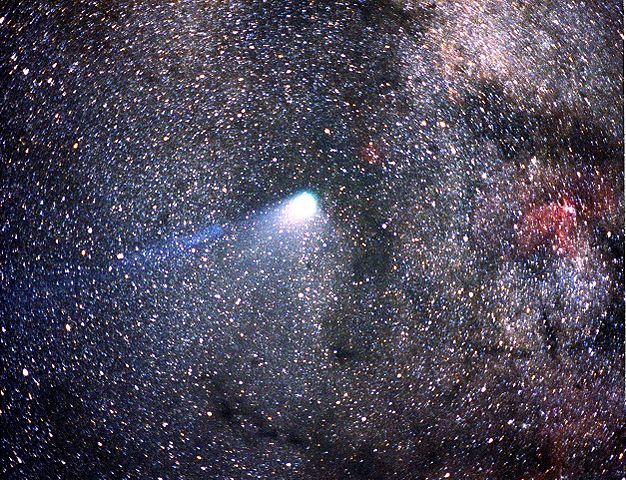 |
This is a file from the Wikimedia Commons. Information from its description page there is shown below.
Commons is a freely licensed media file repository. You can help.
|
| Description |
Photo No. AC86-0720-2 – Taken from Kuiper Airborne Observatory, C141 aircraft April 8/9, 1986, New Zealand Expedition, Halley's Comet crossing Milky Way. Disconnection of ion tail. Photo taken with equipment designed, mounted on the headring and operated by the Charleston (South Carolina) County School District CAN DO Project. |
| Date |
1986 April 8/9 |
| Source |
http://www.nasa.gov/centers/ames/multimedia/images/2005/comets1.html |
| Author |
Kuiper Airborne Observatory, C141 aircraft April 8/9, 1986, New Zealand Expedition |
Permission
( Reusing this file) |
NASA still images, audio files and video generally are not copyrighted.
|
| Public domainPublic domainfalsefalse |
 |
This file is in the public domain because it was solely created by NASA. NASA copyright policy states that "NASA material is not protected by copyright unless noted". (See Template:PD-USGov, NASA copyright policy page or JPL Image Use Policy.) |
|
|
|
Warnings:
- Use of NASA logos, insignia and emblems are restricted per US law 14 CFR 1221.
- The NASA website hosts a large number of images from the Soviet/ Russian space agency, and other non-American space agencies. These are not necessarily in the public domain.
- Materials based on Hubble Space Telescope data may be copyrighted if they are not explicitly produced by the STScI. See also {{ PD-Hubble}} and {{ Cc-Hubble}}.
- The SOHO (ESA & NASA) joint project implies that all materials created by its probe are copyrighted and require permission for commercial non-educational use.
- Images featured on the Astronomy Picture of the Day (APOD) web site may be copyrighted.
|
File usage
The following pages on Schools Wikipedia link to this image (list may be incomplete):
Schools Wikipedia has been carefully checked to give you the best learning experience. SOS Childrens Villages is an international children's charity, providing a good home and loving family to thousands of children who have lost their parents. We also work with communities to help vulnerable families stay together and raise children in the best possible environment. Sponsoring a child is a great way to help children who need your support.





